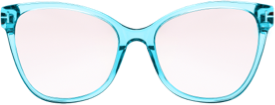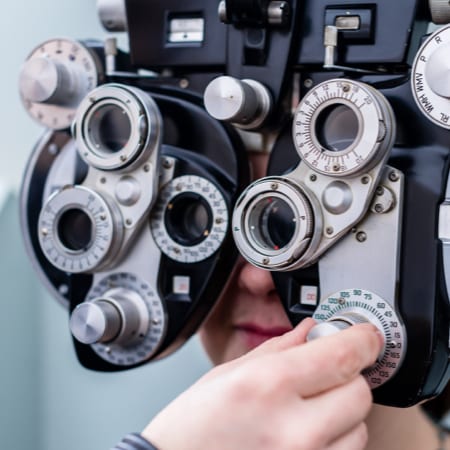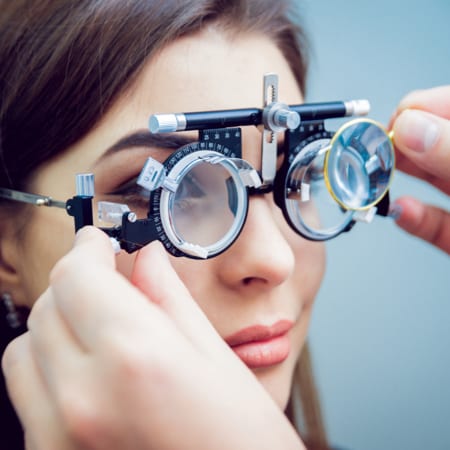Protecting Your Long-Term Vision
Comprehensive eye exams at Erie Shores Eyecare go beyond updating prescriptions—they play an important role in detecting early signs of eye diseases. Detecting and treating eye diseases early can be a crucial step in preserving vision.
Regular eye exams help our team identify subtle changes that may indicate the presence of eye diseases. Your vision is invaluable, and we’re here to help preserve it. Book your next appointment online today.

Early Detection & Treatment
The early detection of eye diseases allows our team to formulate personalized treatment plans promptly, and can make a big difference when it comes to preserving your vision long-term. Our diagnostic arsenal includes a range of innovative technologies designed to identify abnormalities and signs of potential issues.


Our Diagnostic Technology
At Erie Shores Eyecare, we use a host of diagnostic technologies, each designed for a unique purpose, to enhance our ability to detect eye diseases in their early stages. Our team is comprehensive when it comes to your eye health, and we have the technology to match.
From detailed retinal imaging to eye measurements and specialized diagnostic technology for AMD, we can get an early start on eye disease management.
Ask our team about our technology, and we are more than happy to address any questions or concerns you may have about our technology.
Optical coherence tomography (OCT) provides detailed cross-sectional images of the retina, aiding in the diagnosis and monitoring of various eye conditions, such as diabetic retinopathy, macular degeneration, and glaucoma.
Our tonometry options include non-contact tonometry (commonly known as “air puff” tonometry) and Goldmann applanation tonometry. These noninvasive methods measure intraocular pressure, aiding in the early detection of conditions such as glaucoma.
Corneal topography enables us to map the shape and curvature of your cornea with precision. This helps in the detection and monitoring of conditions like astigmatism, keratoconus, and corneal irregularities.
For diagnosing age-related macular degeneration (AMD) and monitoring its progression, AdaptDx Pro is a valuable diagnostic tool. This dark adaptometer measures the speed of dark adaptation, providing insights into overall eye health. For more information on AMD, explore our AMD Centre of Excellence page.
This diagnostic method helps actively monitor and protect the macular pigment in your eyes. By measuring pigment density, we can assess your risk for vision loss and develop personalized treatment plans.
Capturing a comprehensive view of your eye in a single image, ultra-widefield imaging aids in the early detection and treatment of various eye diseases with precision and efficiency.
The Different Forms of Eye Disease
Understanding various forms of eye diseases is essential for early recognition. When you’re aware of the early signs of eye disease, you can be more informed about when to schedule a detailed exam to check in on your eye health.
Patient education is an important aspect of what we do at Erie Shores Eyecare. Our experienced team has managed the different forms of eye disease for many years, and we bring that expertise to every patient interaction.
Following the diagnostic stage, we begin preparing a personalized treatment plan based on your needs.
Age-related macular degeneration (AMD) is a progressive disease affecting central vision. Subclinical AMD involves night vision difficulty and impaired dark adaptation. Dry AMD is the most common form and occurs as the macula thins with age. Wet AMD, less common but more severe, results in faster vision loss due to abnormal blood vessel growth.
Cataracts form when the eye’s lens becomes clouded, leading to blurry vision, decreased night vision, and muted colours. Cataract surgery can often effectively remove them and restore vision.
Glaucoma refers to a group of conditions causing optic nerve damage that can lead to vision loss if not detected and treated early. Regular eye exams with tonometry are key for monitoring changes in intraocular pressure.
Sudden flashes or a shower of floaters may indicate an eye emergency. Seek immediate assistance for potential retinal detachment.
Diabetes increases the risk of eye diseases such as cataracts and diabetic retinopathy. Diabetic retinopathy damages retinal blood vessels and requires regular eye exams.
Characterized by inflammation of the conjunctiva and better known as “pink eye,” conjunctivitis has viral, bacterial, and allergic types. Prompt diagnosis and treatment can help resolve your symptoms.
Uveitis is inflammation of the uvea, or middle eye layer, and demands attention and timely treatment to prevent complications. Regular eye exams are an important part of preventing this uncomfortable condition.
Dry eye results from inadequate tear production or a lack of quality tears, causing discomfort and various symptoms. Several in-office and at-home treatments are available to help you find relief from dry eye discomfort.
A scar tissue layer forming on the retina’s surface characterizes epiretinal membrane, affecting visual clarity. Observation or surgical procedures may be recommended based on your symptoms.
Keratoconus is a progressive eye disease affecting corneal shape that can lead to distorted vision. Early detection and specialized contact lenses can help you manage this condition.
Stop Eye Disease in Its Tracks
Our dedicated and experienced team at Erie Shores Eyecare is equipped to help manage different forms of eye disease. Book your appointment online today to stay on top of your eye health and visual comfort.
















